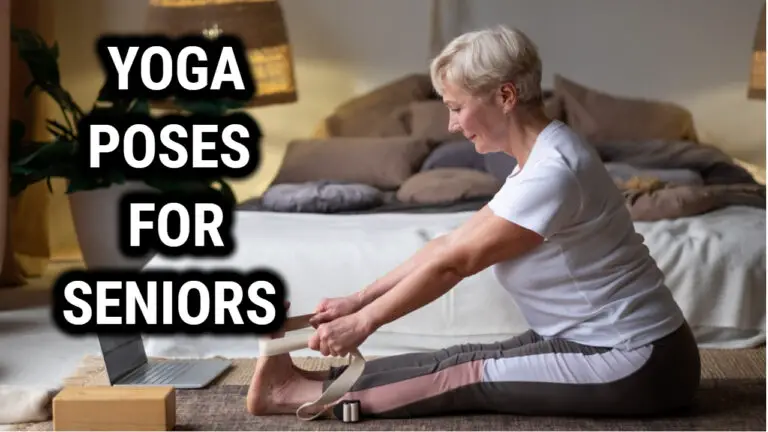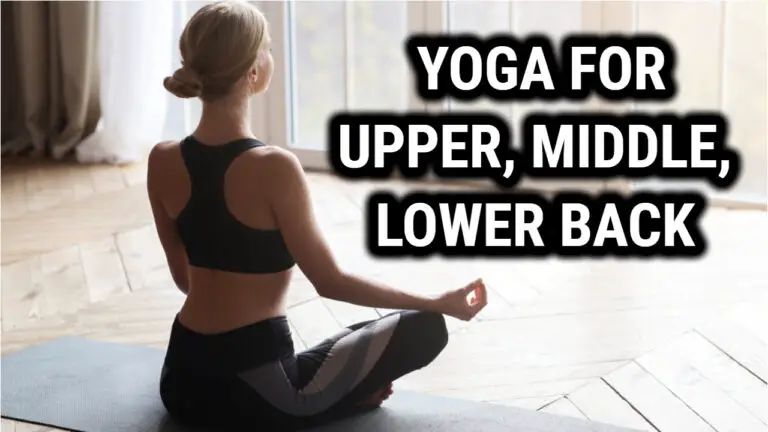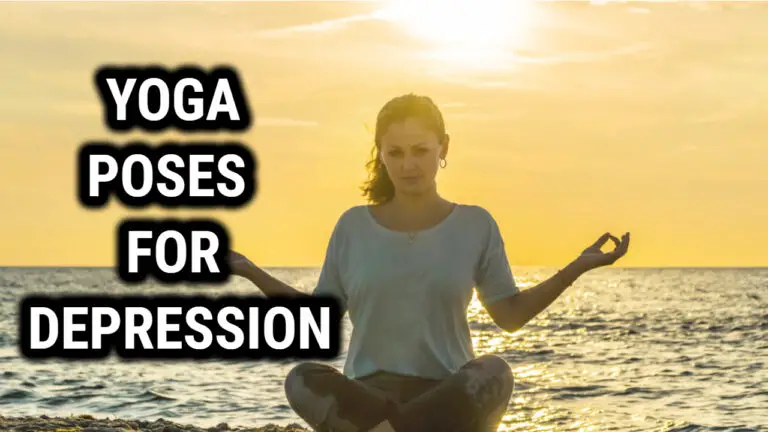30 Minute Yoga Workout For Beginners

Yoga is an ancient practice that has been used for centuries to improve physical, mental, and spiritual wellbeing.
For those who are just starting out on their yoga journey, a 30-minute workout is the perfect way to get started. It allows for a gentle introduction to the practice without the feeling of being overwhelmed or overworked.
In this article, we’ll explore why a 30-minute yoga workout is ideal for beginners and provide tips on how to structure and enjoy your own beginner yoga routine.
Benefits Of Yoga
Yoga is a popular exercise that has been around for centuries and provides many benefits for people of all ages and fitness levels. It helps improve flexibility, strength, balance, coordination, and posture. It also increases energy levels and reduces stress.
Practicing yoga can help you feel more relaxed mentally and physically, as well as reduce symptoms of anxiety, depression, and insomnia. Yoga can be done in the comfort of your own home or with an instructor at a studio or gym. You don’t need any special equipment – just comfortable clothing and a mat or towel – so it’s easy to get started!
Beginner yoga classes focus on basic poses like sun salutations, triangle pose, tree pose, forward fold, and child’s pose. With regular practice, you’ll soon be able to move into more advanced poses with ease.
Preparing For Your Workout
Now that you know the many benefits yoga can bring to your life, it is time to prepare for your workout. To get the most out of your yoga practice and avoid injury, it is important to follow a few guidelines before starting.
Here are some tips for preparing for your yoga session:
- Yoga mat: A non-slip mat will ensure maximum grip while doing poses.
- Props: Blocks, straps and bolsters can be used to help with balance and stability in certain poses.
- Clothing: Wear comfortable clothes that do not restrict movement or breathing.
- Hydrate: Make sure you drink plenty of water before and after the session to stay hydrated.
- Empty stomach: Avoid eating a heavy meal at least two hours prior to your practice so as not to feel uncomfortable during poses.
- Warm up: Start slowly with some simple stretches to get the body ready for more complex movements.
With these tips in mind, you are now ready to get started with your yoga workout!
Warm-Up Exercises
The warm-up exercises are an important part of any yoga workout, so let’s get started! Close your eyes and imagine yourself in a peaceful place as you begin to move your body. Feel the tension melting away as you take deep breaths and stretch your arms and legs.
| Exercise | Benefits | Time |
| Cat/Cow | Strengthens core muscles, stretches lower back & abdomen | 30s |
| Child Pose | Calms the mind, relaxes and stretches the spine & hips | 1min |
| Downward Dog | Stretches shoulders, chest and hamstrings | 1min |
| Cobra Pose | Strengthens back muscles and tones abs | 30s |
Now that you’ve warmed up your body, it’s time to move on to more challenging poses. When you’re done with these poses, take some time to breathe deeply and reflect on how much progress you’ve made in such a short amount of time.
Basic Yoga Poses
The basic yoga poses are the foundation of your practice. From warrior to tree, there are a variety of poses that will help you build strength, flexibility and balance. Each pose has its own unique benefits, so it’s important to practice them all.
The idea behind each pose is to create tension and focus on the breath. As you move through each pose, take time to notice how your body feels and how it responds to the movement. With each inhale and exhale, you’ll feel yourself getting stronger and more flexible.
Over time, these foundational poses will become second nature as they become part of your regular routine.
An effective yoga practice starts with mastering the basics. Taking the time to learn proper form and alignment will help prevent injury as well as ensure that you get the most out of your practice.
As you progress in your yoga journey, remember to stay mindful of every breath and movement – this is key for finding balance both on and off the mat!
Standing Poses
Now that we have covered the foundational poses, let’s move on to standing poses. Standing poses are a great way to increase balance and flexibility in your legs and core. These poses can help build strength in your lower body, as well as focus and concentration.
The mountain pose is a great starting point for beginners; it helps you become aware of your alignment and develop proper posture. From here, you can move on to more challenging standing postures like the warrior pose or chair pose.
To get into these postures, start by standing tall with your feet hip-width apart and your arms at your sides.
Your back should be straight but relaxed, and you should always keep your shoulders down away from your ears. As you inhale, imagine drawing energy up from the ground through your feet into every cell of your body until you reach the top of your head. Take several deep breaths in this position before slowly releasing back to mountain pose.
With practice, you’ll be able to hold these postures for longer periods of time, building strength and stability in both body and mind.
Seated Poses
Seated poses in yoga can be an effective way to stretch and strengthen the body. These poses are especially beneficial for beginner yogis as they require little in terms of balance and coordination.
Here are a few seated poses that you can incorporate into your minute yoga workout:
- Forward Folds
- Paschimottanasana (Seated Forward Fold)
- Janu Sirsasana (Head-to-Knee Pose)
Twists:
- Bharadvajasana (Bharadvaja’s Twist)
- Ardha Matsyendrasana (Half Lord of the Fishes Pose)
These seated poses can help to improve your flexibility, increase circulation, ground your energy, and reduce tension in the mind and body. In addition, they provide a gentle transition between standing or more active poses.
Experiment with different breath patterns, props, and postures to find what works best for you. With time and practice, you may be able to deepen these simple poses into something even more powerful.
Inversions
Inversions are yoga postures that involve inverting the body, so that we are upside-down. They can be intimidating for beginners, but they have many benefits including improved circulation and digestion, as well as calming and energizing effects.
Inversions also help to develop strength, balance and focus. When starting out with inversions, it is important to practice them under the supervision of an experienced teacher. Before attempting an inversion on your own, you should practice the poses that lead up to it so that you can build strength and stability.
It’s also important to listen to your body while practicing inversions and never push yourself beyond what you are comfortable with. With regular practice and patience, you will eventually be able to do more complicated inversions safely.
If practiced safely and mindfully, inversions can be a great way to strengthen your body and improve overall wellbeing. They take some time to get used to, but once you have gained confidence in them they can become a mainstay of your yoga practice.
Final Relaxation
Now that you have experienced the challenge of inversions, it’s time to reward yourself with a final relaxation period.
To prepare for this moment, here’s a list of helpful tips:
- Make sure your body is supported and comfortable
- Soften your breath and facial expression
- Invite a sense of calm and ease
Take some time to explore your sensations, thoughts and emotions without judgement or expectation.
Notice the stillness within and around you, hear the subtle sounds around you, like birds chirping in the background or distant car traffic.
Allow yourself to let go of all tension stored in your body and mind, allowing peace to be present here now.
FAQ’s
Q: Do I need any special equipment to do this yoga workout?
A: No, you don’t need any special equipment to do this yoga workout. However, it’s recommended that you have a yoga mat for comfort and stability. You can also use a block or blanket for support if needed.
Q: Is yoga suitable for beginners?
A: Yes, yoga is suitable for beginners! There are many styles of yoga, and some are more challenging than others. It’s important to find a beginner-friendly class or online video and go at your own pace.
Q: What if I can’t do all the poses?
A: That’s okay! Yoga is not about being perfect or doing everything perfectly. Listen to your body and modify the poses as needed. It’s better to do a modified version of a pose than to push yourself too far and risk injury.
Q: How often should I do yoga?
A: It’s recommended to do yoga at least 2-3 times per week to see the benefits. However, even just a few minutes of yoga each day can make a difference in how you feel physically and mentally.
Q: Can yoga help with stress and anxiety?
A: Yes, yoga has been shown to be an effective tool for managing stress and anxiety. The combination of deep breathing, movement, and meditation can help calm the mind and reduce tension in the body.
Q: What if I have a health condition or injury?
A: It’s important to talk to your doctor before starting any new exercise program, especially if you have a health condition or injury. They can give you specific recommendations for what poses to avoid or modify.
I hope these FAQs answer some of your questions about practicing yoga as a beginner. Remember to always listen to your body and take breaks when needed.
Conclusion
Yoga is a great way to stay fit and healthy. It can help improve your balance, strength, and flexibility, while also calming your mind.
I hope this 30 minute yoga workout for beginners has inspired you to make yoga part of your regular exercise routine. With practice and dedication, you’ll soon be able to build up the intensity of your workouts and reap the long-term benefits that yoga has to offer.
So go ahead and give it a try – you won’t regret it!





